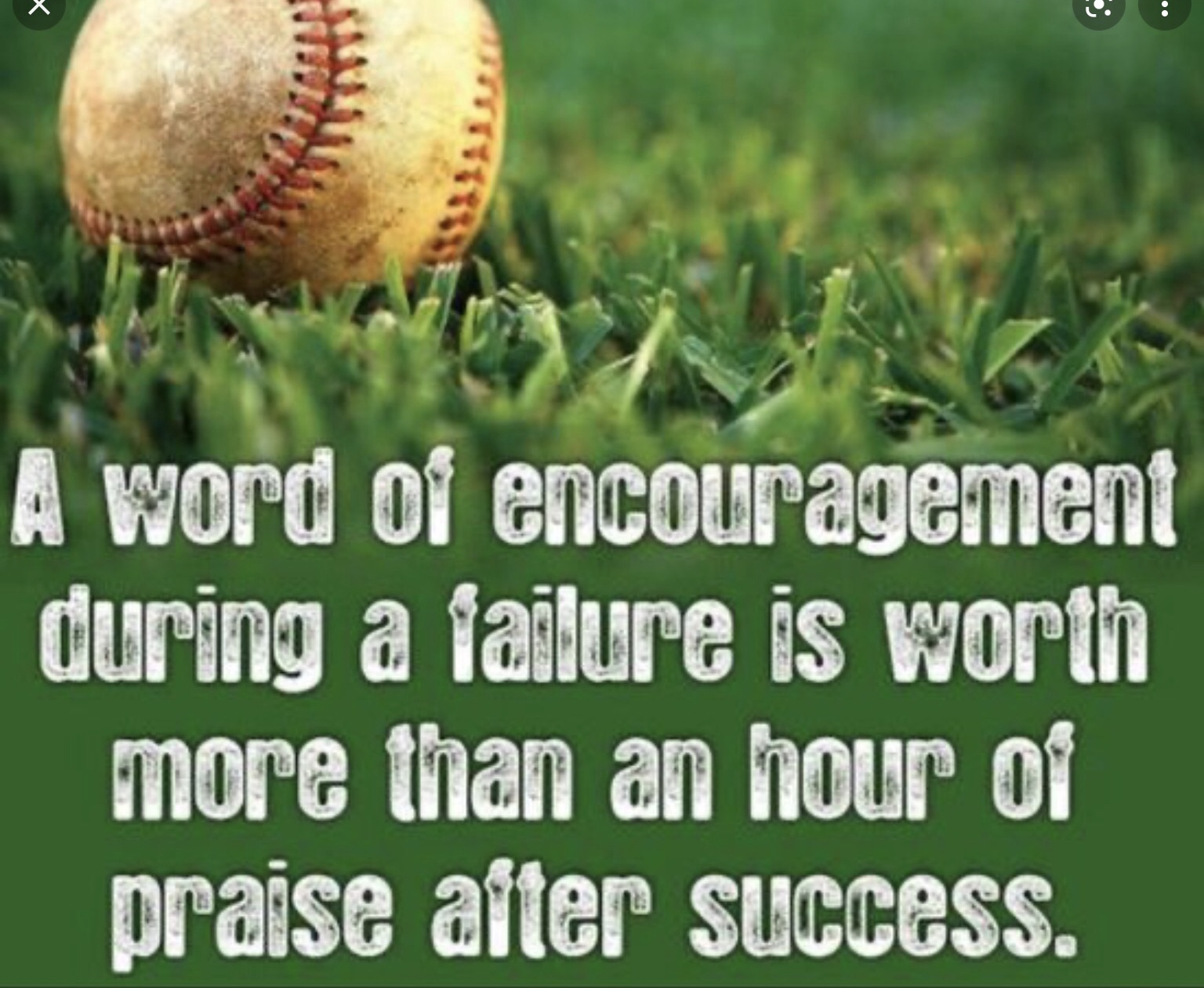
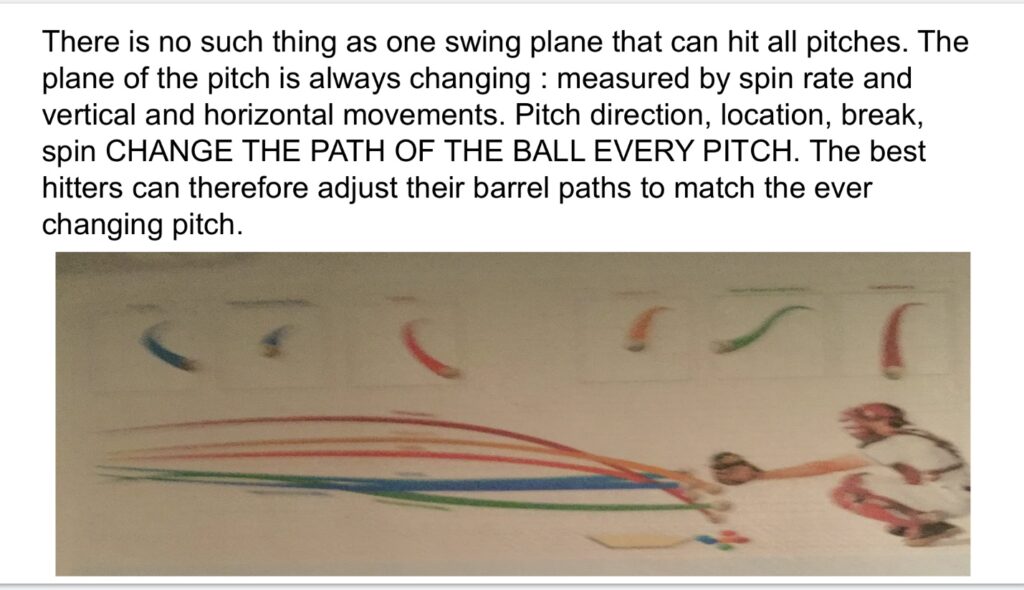
VISUAL PROCESSING
Let’s look at timing from a visual processing perspective:
- There is the hitter’s perception of speed or the “effective velocity” of the pitch;
- There is the timing of the hitter’s visual processing and window of when he/she must subconsciously perceive/decide/guess whether it is a ball or strike, fast or slow, in or out, up or down, yes or no, etc.;
- There is the rate of force development or the time it takes for a hitter to “get the swing off”; the hitter’s swing path/plane and rate of force development should ADD TIME to his/her decision making process;
- Correct TIMING paired with elite visual processing is the GOLD STANDARD.
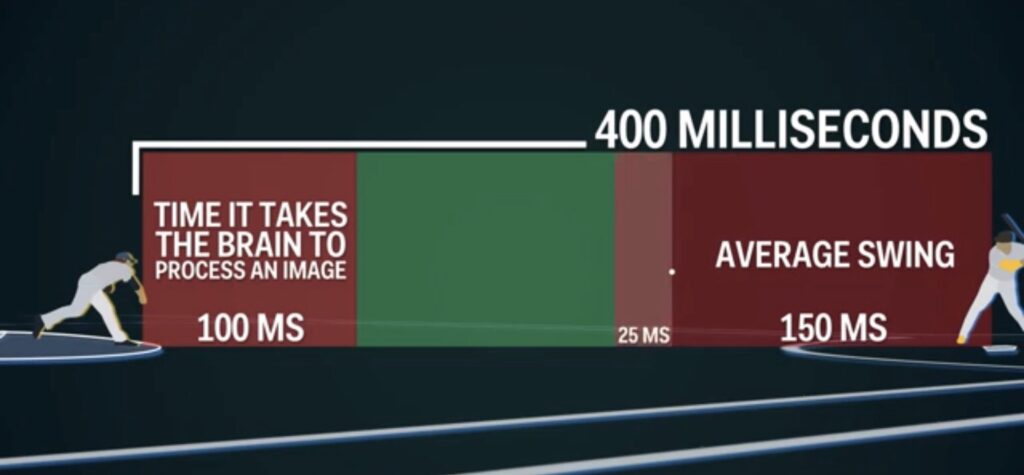
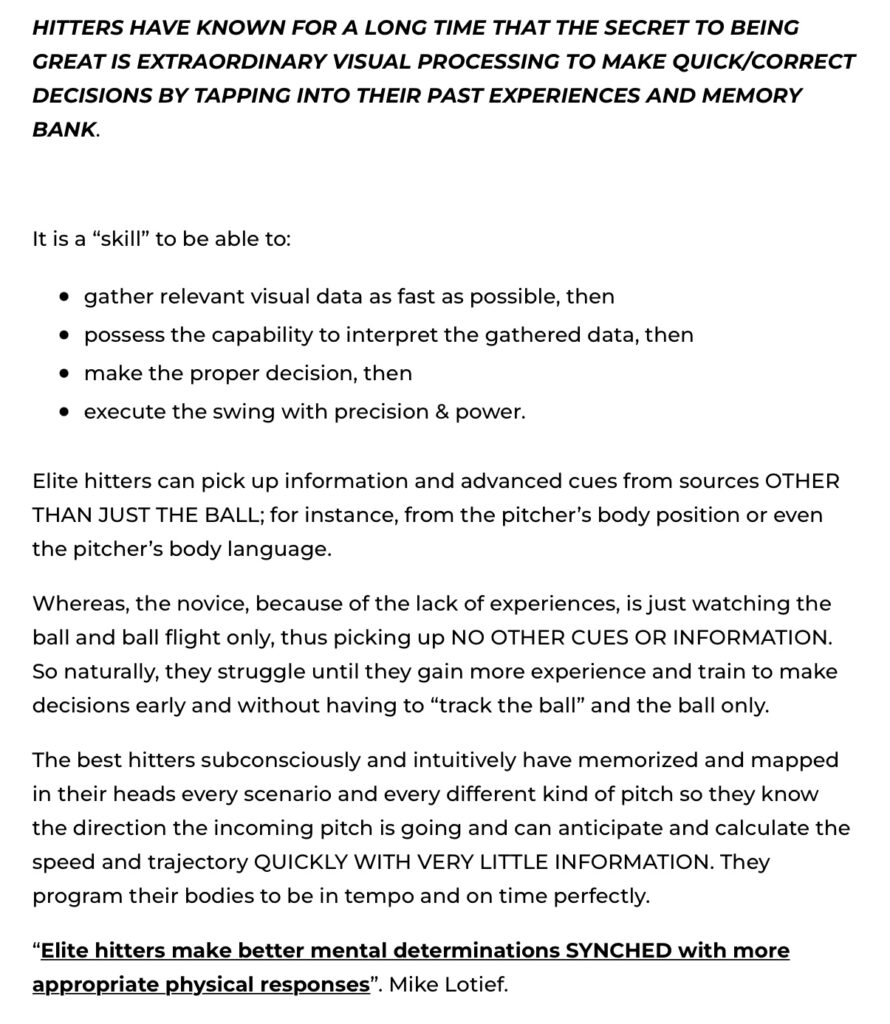
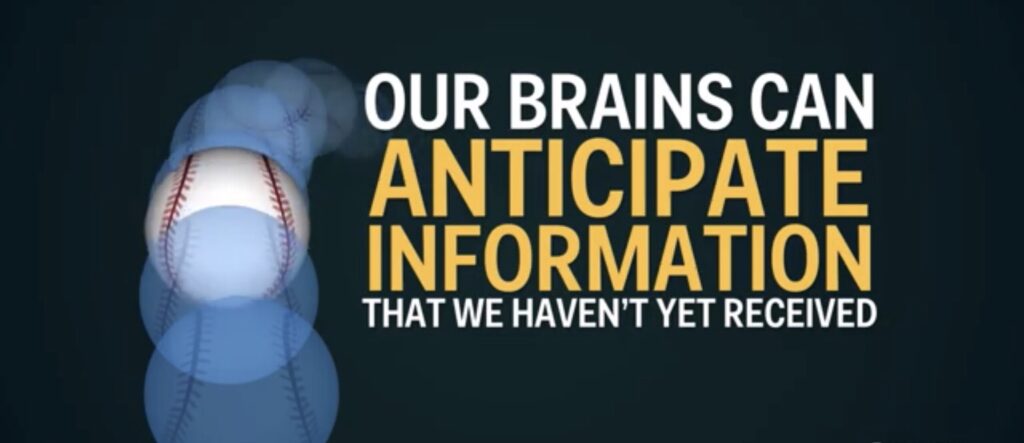
YOU NEED A BETTER PLAN THAN LOOK AWAY, REACT IN
Every swing involves visual processing and a DECISION MAKING PROCESS. Hitters who try to use ONLY ONE SWING RHYTHM TO MATCH MULTIPLE LOCATIONS & PITCH TYPES will be dominated by good pitchers.
Hitters who are “reactive” to the pitch usually stop being good hitters as soon as the pitchers get better at changing speeds and commanding locations. LOOK AWAY, REACT IN is a hitting approach and plan that can work in recreational ball or even at the high school level, and probably always against a low level, one dimensional pitcher.
But as soon as hitters start facing pitchers who can “tunnel” their pitches; IOW, different pitches that do NOT SPLIT APART until they are approximately past the halfway point to home plate – they will STRUGGLE IF their hitting plan remains LOOK AWAY, REACT IN & IF they try to “get their foot down” then initiate their launch at the same time, i.e. using only one swing rhythm to try to match multiple locations and pitch types.
If a hitter is looking away and reacting in, then any pitcher with PLUS velocity will beat that hitter’s approach by either elevating his/her fastball up and in or commanding/locating the fastball just a “bit” inside forcing the hitter to “pull the hands in” or “rush” or “lose their posture”, etc. See below what happens to a “reactive hitter” who gets beat by BOTH a fastball in and a slider away by thinking that ONE SWING RHYTHM CAN MATCH MULTIPLE LOCATIONS.
MANAGE TEMPO & TIMING
Different pitch types that follow the same path and do not split apart until very late take “specific plans” by hitters:
- who can “read pitches” effectively;
- who have impeccable plate discipline;
- who move their middle with proximal to distal control;
- who perceive where the pitch will end up going. IF the hitter is getting NO EARLY CLUES from either the pitcher or the pitched ball in order to perceive where the pitch will end up going, then:
- who “guesses” or predicts BEFORE THE PITCH IS EVER THROWN;
- who “picks a spot”, “hunts a location”, or “sits on a speed”;
How do hitters TIME UP PITCHERS?
- It takes the convergence of great swing mechanics and perfect contact especially against well executed pitches;
- It takes a good plan and hitting approach;
- It takes the courage to STICK TO IT;
- It takes a championship mindset which is not deterred by a borderline pitch that goes against you;
- It takes focus on the task at hand – WIN THIS PITCH; and
- It takes waiting to get the pitch you are looking for and putting YOUR VERY BEST SWING ON IT.
What’s the relevance of when the hitter GETS HIS FRONT FOOT DOWN in relationship to where the incoming pitch is?
With lumbo-pelvic-spine driven hitters, monitoring and detecting movement variations is simple because you don’t worry about the “DISTAL LEGS” – you manage your TEMPO & TIMING via HINGING & COILING & MOVING THE MIDDLE & ROTATING YOUR PELVIS WITH AN INTEGRATED SPINE. If you understand PROXIMAL TO DISTAL then the relevant question is NEVER, “when do I get my foot down?”.
If you understand and believe PROXIMAL TO DISTAL and the lumbo-pelvic-spine complex, then you don’t worry about the “distal legs” other than using toe touch as a “landmark” in relationship to the incoming pitch to show the hitters where they are in their TEMPO & TIMING (IOW, phase of the movement pattern: hinge/pelvis load, coil/move the middle, creating elasticity, rotation, etc.).
BIG PAPPI, BONDS
LET’S TAKE A LOOK AT SOME HOME RUN SWINGS ON DIFFERENT PITCH TYPES & LOCATIONS AND DETERMINE WHERE EACH HITTER IS IN THE LUMBO-PELVIS SPINE SEQUENCE IN RELATIONSHIP TO THE INCOMING PITCH.
Big Pappi hammers that pitch – velocity on the inside half of the plate. Below is a still frame from this same at-bat, right about toe touch.
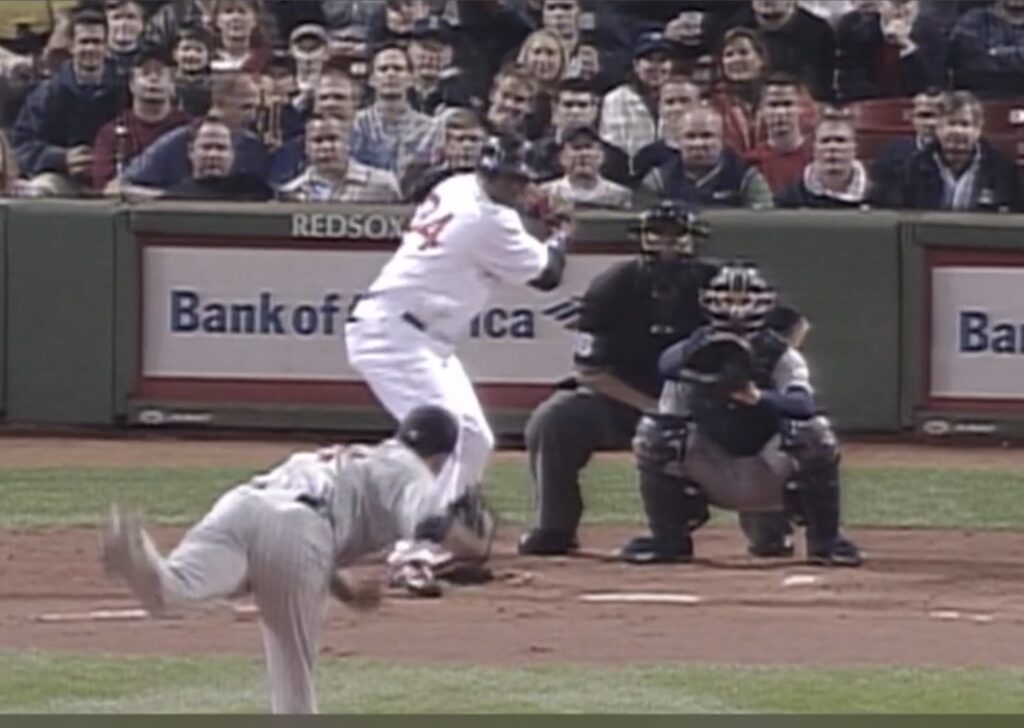
With ball approximately 15 feet away, Pappi is “rotating his lumbo-pelvic-spine complex” at about the landmark of toe touch.
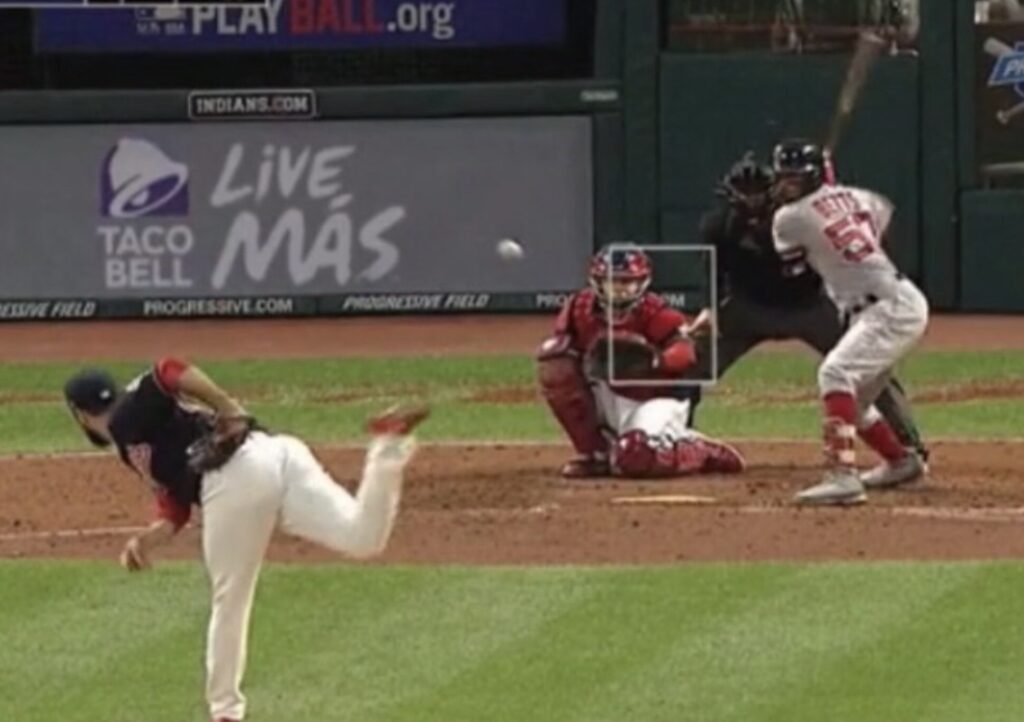
This is Jake Arredondo hitting a change up for a home run. Once Jake gets to toe touch (our landmark-not a swing phase):
- he continues to coil and maintain tension in his pelvis AFTER TOE TOUCH,
- he continues to “move his middle” while maintaining his “posture”;
- his spine stays integrated with his pelvis and is stable;
- his hands and barrel “stay back”;
- his pelvis has NOT started to “rotate”;
- basically, the pitch is to the dirt cut-out in front of home plate.
Hitters are only as good as the pitch they swing at. Hitters should know their HOT ZONES and swing there more often. Hitters should not chase nor expand the zone especially on pitches they struggle with. To be a great hitter, YOU MUST HAVE A SWING APPROACH THAT ALLOWS YOU TO SWING AT GOOD PITCHES IN THE HEART OF THE STRIKE ZONE & AVOID CHASING PITCHES OUT OF THE ZONE.
“We discipline our hitters in relationship to their abilities – some hitters can control the whole zone while others lose bat speed and struggle with different pitch types and locations. Some hitters have to “cheat” to certain parts of the zone in order to improve their bat speed and efficiency. How long does a hitter have to see the ball travel? And what is the hitter going to do in order to get his/her body into a position to put the best swing on it?”
NEXT UP: BARRY BONDS on a side-by-side comparison between a fastball and an off-speed pitch.
On the right is the off-speed pitch: Bonds is continuing to load, coil, move his middle as he picks up information and recognizes the pitch type. Very similar movement patterns between the fastball and change-up early on. No major adjustments yet in either sequence or tempo. Said another way for my “distal” friends, his stride so far is the same for the fastball (on the left) and the off-speed (on the right); for my “proximal supporters”, his coil and move of his middle and posture are the same for both pitches so far.
At the landmark of toe touch is where you can start to notice Bonds’ swing adjustment between hitting velocity versus off-speed. On the left against velocity, Bonds “opens his hips” and “rotates into toe touch”. On the right against an off-speed, his hips are still “closed” as he creates “elasticity” via a pronounced “lowering of his center of mass” while keeping his hands “back”.
The BUFFER Bonds creates to be able to adjust to the change-up/off-speed is a result of the ability to maintain and even increase elasticity AFTER TOE TOUCH. Very good hitters with very good VISUAL PROCESSING SKILLS SYNCHED TO PROPER HITTING MECHANICS AND THE RIGHT HITTING PLAN/APPROACH.
MILLISECONDS ARE WORTH MILLIONS
Great hitters make it look so easy. But make no mistake about it, these hitters are extremely skilled at gathering relevant visual data in milliseconds, interpreting it, making the proper decision and putting their bodies in the right positions to execute their swings with such precision and power. Fascinating to study and watch them perform the most difficult skill in all of sports!
PURSUE EXCELLENCE & WIN THIS PITCH!
About the Author

Mike Lotief coached 17 successful years as either the head softball coach or co-head softball coach with his wife Stefni Whitton Lotief at the University of Louisiana from 2002-2017 with an overall coaching record of 731-176 (80.6 winning percentage). Every season, the Ragin Cajuns softball team advanced to the NCAA tournament and also advanced to three (3) Women’s College World Series (2003, 2008, 2014) and from 2012-2016 advanced to five (5) straight NCAA Super Regionals. Coach Lotief produced over 40 All American selections and his 2017 team lead the nation in scoring and was ranked in the Top 10 in home runs, slugging percentage, on base percentage.
The coach is a cancer survivor (twice) and was the first person in the U.S. to receive the Pro Trach device. Mike and Stefni spearheaded and raised the funding to build the new softball stadium in 2009 and the new softball indoor hitting facility in 2015. They are proud parents to Chelsea, who played softball and graduated from the Univ. of Louisiana in 2018, and Andrew, who is a junior at Louisiana studying Mechanical Engineering.
Previous Articles in this Series
- The Mental Swing Attractors: Failure Cannot Break You (Nov. 11, 2021)
- Training Insights: “Swing Attractors” by Coach Mike Lotief… the Flaws of Pelvic Loading (Nov. 9, 2021)
- The Mental Swing Attractors: Push Yourself… You Don’t Have to Be #1 to BE #1! (Nov. 4, 2021)
- Training Insights: “Swing Attractors” by Coach Mike Lotief… Pelvis Loading, Part 2—The Planes of Movement (Nov. 2, 2021)
- The Mental Swing Attractors: Remove the Rope from Your Ankle & Get Rid of the Limiting Beliefs! (Oct. 28, 2021)
- Training Insights: “Swing Attractors” by Coach Mike Lotief… Pelvis Loading, Part 1—It’s All in the Hips (or Somewhere Deep Below) Oct. 26, 2021
- The Mental Swing Attractors: Champions are Developed by Devotion & Discipline! (Oct. 21, 2021)
- Training Expertise: “Swing Attractors”… the Secrets of Power Hitting by Coach Mike Lotief (Oct. 19, 2021)
More About Mike Lotief
- Why Michael Lotief is a Legendary Coach? by Jay Patel
- The Secret To Michael Lotief’s Success. By Jay Patel
- Michael Lotief Fights for Rajin’ Cajuns by Graham Hays ESPN
- Michael Lotief: Taking His Sport to New Heights by Neha Kapoor
- For the Love of the Game: A Look at Ragin’ Cajun Softball’s Power Couple
- How Louisiana-Lafayette’s Michael Lotief Develops Hitting Gems by Graham Hays ESPN
